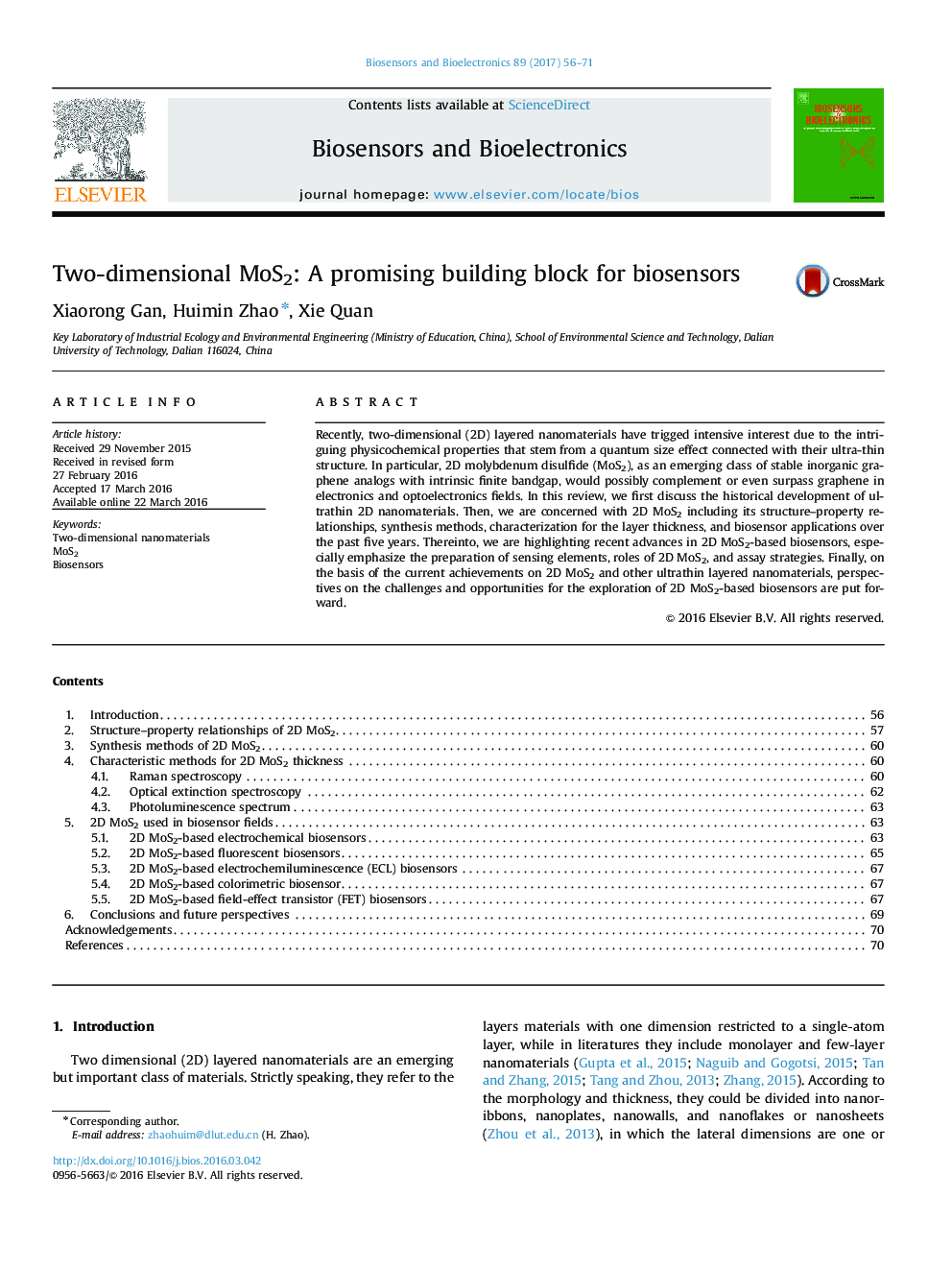| Article ID | Journal | Published Year | Pages | File Type |
|---|---|---|---|---|
| 5031670 | Biosensors and Bioelectronics | 2017 | 16 Pages |
Abstract
Recently, two-dimensional (2D) layered nanomaterials have trigged intensive interest due to the intriguing physicochemical properties that stem from a quantum size effect connected with their ultra-thin structure. In particular, 2D molybdenum disulfide (MoS2), as an emerging class of stable inorganic graphene analogs with intrinsic finite bandgap, would possibly complement or even surpass graphene in electronics and optoelectronics fields. In this review, we first discuss the historical development of ultrathin 2D nanomaterials. Then, we are concerned with 2D MoS2 including its structure-property relationships, synthesis methods, characterization for the layer thickness, and biosensor applications over the past five years. Thereinto, we are highlighting recent advances in 2D MoS2-based biosensors, especially emphasize the preparation of sensing elements, roles of 2D MoS2, and assay strategies. Finally, on the basis of the current achievements on 2D MoS2 and other ultrathin layered nanomaterials, perspectives on the challenges and opportunities for the exploration of 2D MoS2-based biosensors are put forward.
Related Topics
Physical Sciences and Engineering
Chemistry
Analytical Chemistry
Authors
Xiaorong Gan, Huimin Zhao, Xie Quan,
